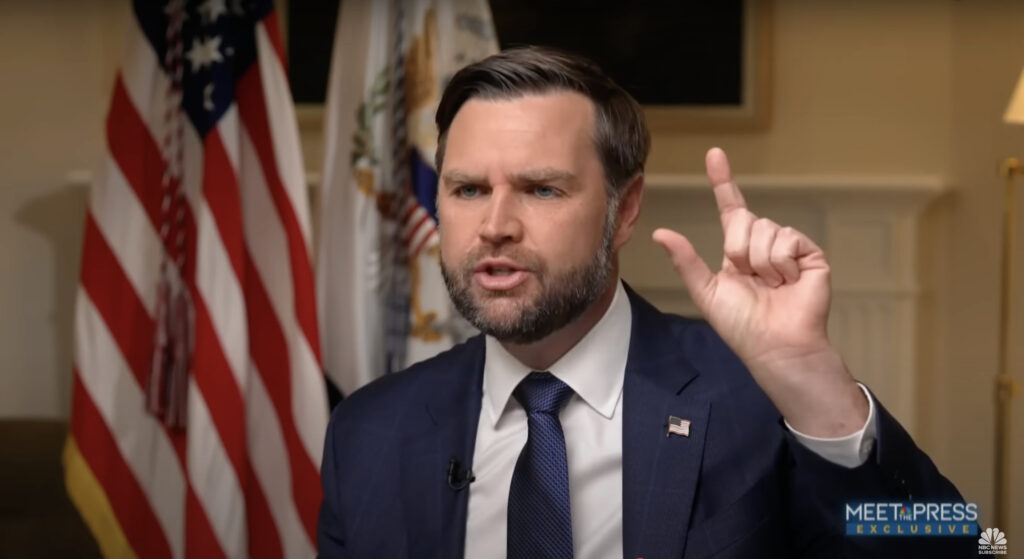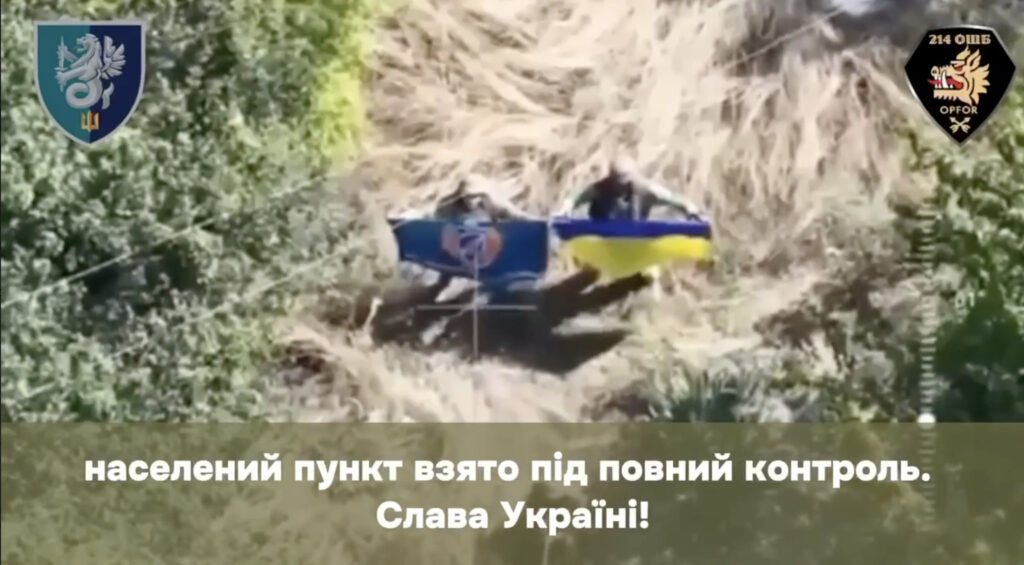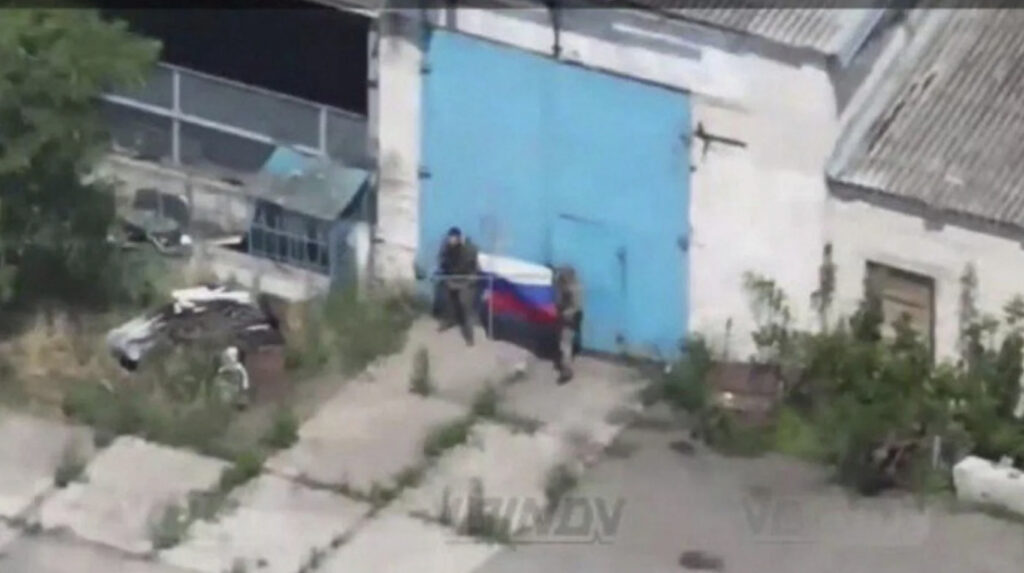At Home and on the Seas, Trump Expands Use of American Force

© Kenny Holston/The New York Times


© Kenny Holston/The New York Times


© Kenny Holston/The New York Times


© Jason Andrew for The New York Times


© Doug Mills/The New York Times


© Doug Mills/The New York Times


© Haiyun Jiang/The New York Times


© Adriana Zehbrauskas for The New York Times


© Todd Anderson for The New York Times


© Haiyun Jiang/The New York Times


© Nic Antaya for The New York Times


US Vice President J.D. Vance stated that Russia will “have some stake” in discussions about security guarantees for Ukraine in attempts to bring the war to an end, according to his interview with NBC News.
Vance argued that Russian participation is inevitable given their central role in the war.
“How can you reasonably provide security guarantees without talking to the Russians about what would be necessary to bring the war to a close?” he told NBC News, adding that “they’re the critical party necessary to stop the killing.”
The vice president also maintained the White House position that American military personnel will not be deployed to Ukraine under any security arrangement.
However, he assured that Washington would continue playing an active role in Ukrainian security and suggested European nations and other countries would take on significant responsibilities.
Trump’s envoy Steve Witkoff earlier said that Putin and Trump agreed on “reliable security guarantees” during their Alaska meeting on 15 August, including protections similar to NATO’s Article 5.
Russian Foreign Minister Sergey Lavrov, also speaking to NBC News on 24 August, stated that security guarantees must “be built on consensus”.
He revealed that during Alaska talks, Russian President Vladimir Putin briefed Donald Trump on principles the Ukrainian delegation had proposed during April 2022 negotiations in Istanbul.
According to Lavrov, those earlier Ukrainian proposals included establishing a security guarantor group comprising UN Security Council permanent members—Britain, China, the United States, France, and Russia—along with Germany, Türkiye, and other interested nations. The arrangement would require Ukraine to remain neutral, avoid military alliances, and maintain non-nuclear status.
Lavrov also told NBC that Russia does not recognize Zelenskyy as Ukraine’s legitimate leader but only as the “de facto head of the regime.”
Russian Foreign Minister demanded Ukraine surrender occupied territories, referring to eastern and southern Ukrainian regions as “Novorossiya” and insisting Ukraine must “let people go” in these areas. He presented these territorial concessions as conditions for Ukraine’s right to exist as a sovereign state.
European officials are discussing plans to deploy British and French military personnel to Ukraine as security guarantees, with approximately 10 countries ready to participate in the initiative.
The plan involves European troops initially focusing on training Ukrainian forces away from combat zones, while the US would provide logistics, air support, intelligence sharing, and weapons without deploying American soldiers.
However, several European officials remain skeptical that these guarantees will actually deter Putin, with many expecting peace talks to fail and expose Russia’s unwillingness to end the conflict.


Ukrainian military units have established control over the settlement of Zelenyi Hai [eng: Green grove] in Donetsk Oblast, with the victory announced on Ukraine’s National Flag Day, marking both a tactical achievement and symbolic moment amid broader Russian pressure across the eastern front.
The operational-strategic group of forces “Dnipro” confirmed that fighters from the 37th separate marine infantry brigade, working alongside the 214th separate assault battalion OPFOR, successfully halted the advance of Russian forces in the area.
However, the operational-strategic group “Dnipro” warned that Russian forces are mounting efforts to retake Zelenyi Hai while simultaneously attempting to occupy additional settlements throughout this sector of Donetsk Oblast.
At the beginning of August, Russian forces entered Zelenyi Hai, photographing themselves alongside Russian flags within the settlement, according to the analytical project DeepState.
However, the Main Intelligence Directorate of the Ministry of Defense subsequently reported that Ukrainian special forces eliminated the Russian group that had penetrated the settlement. Despite this operation, DeepState mapping data from 22 August indicated Russian forces maintained control over approximately half of Zelenyi Hai.

Defense forces also recently secured control over most of the nearby village of Tovste, where Ukrainian soldiers raised the national flag.
The Zelenyi Hai operation occurs against a backdrop of intensifying Russian attacks across Donetsk region.
Recent Russian advances north of Pokrovsk saw enemy forces break through up to 17 kilometers, seizing positions that threaten Ukrainian supply lines.
A separate Russian push near Dobropillia reached the Dobropillia–Kramatorsk highway, a critical route for military logistics.
These tactical gains have prompted regional authorities to expand mandatory evacuation zones. Vadym Filashkin, head of the Donetsk Regional Military Administration, announced on 14 August that five settlements must evacuate approximately 1,879 children due to relentless Russian bombardment of around 3,000 strikes daily.
The Institute for the Study of War identified a “fortress belt,” the primary fortified defensive line established following 2014 military operations, as one of the strategically important Ukrainian positions in Donetsk Oblast that Russian forces continue to approach and attempt to envelop it.
It stretches 50 kilometers from Sloviansk and Kramatorsk in the north to Druzhkivka and Kostyantynivka in the south.
According to the ISW, Ukraine has invested 11 years in strengthening these positions, building “significant defense industrial and defensive infrastructure in and around these cities.”
The institute warned that territorial concessions, pushed by Russia in recent peace negotiations with the US, would “position Russian forces extremely well to renew their attacks on much more favorable terms,” allowing them to bypass costly urban warfare while gaining operational advantages.